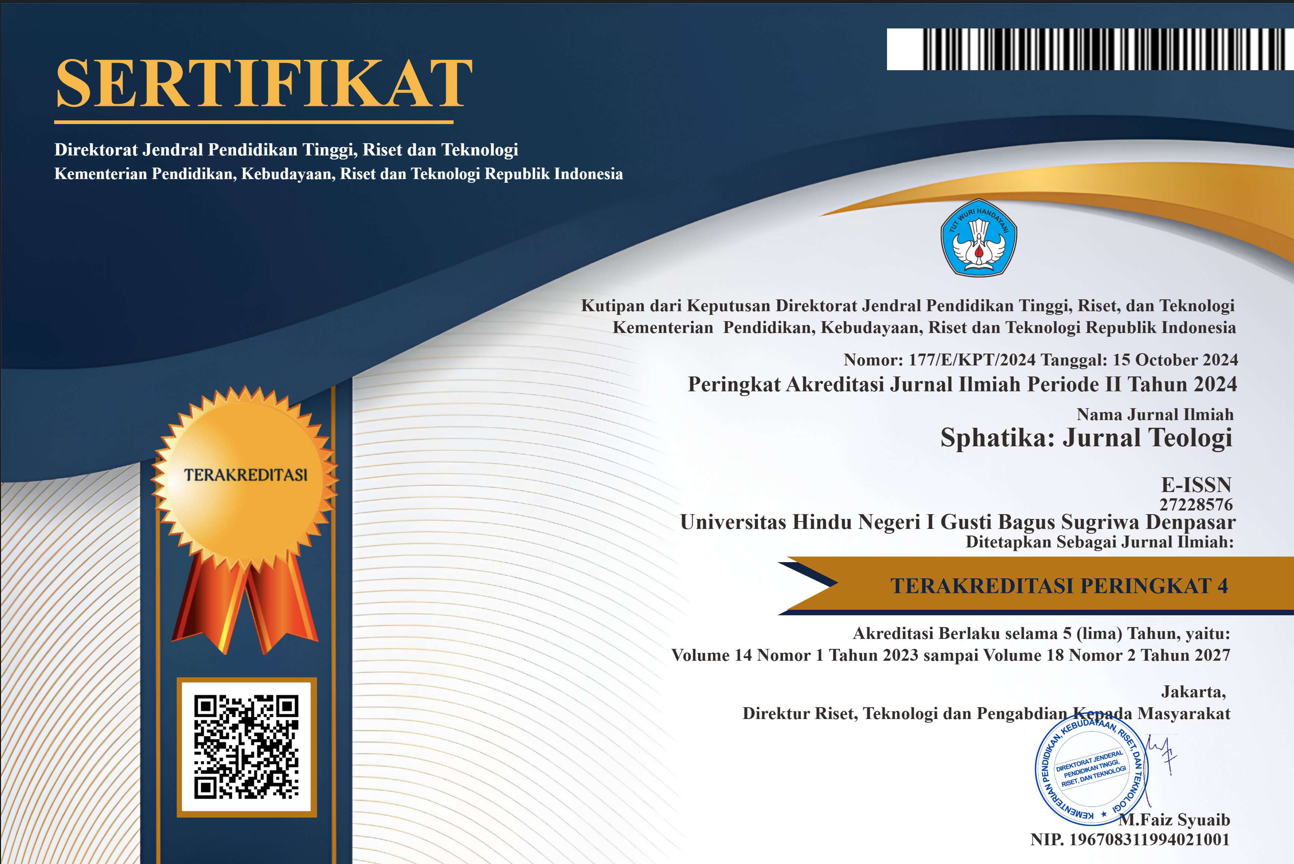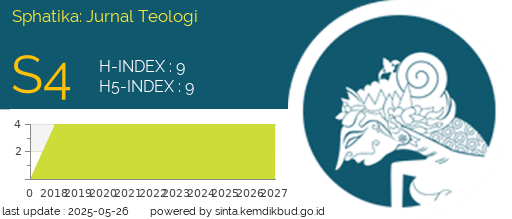Commodification of Sanghyang Dedari Dance in Bona Village, Blahbatuh District, Gianyar Regency, Bali Province
DOI:
https://doi.org/10.25078/sphatika.v14i2.2990Abstract
Abstract
This article examines and analyzes the Sanghyang Dedari Dance which has experienced commodification in Bona Village. As one of the sacred arts performed in a state of trance, at first the Sanghyang Dance was performed only for spiritual purposes, but now the Sanghyang Dance has experienced commodification in the era of globalization in line with the development of tourism and science and technology. The method used in this study is qualitative with a phenomenology approach. The results showed that the Sanghyang Dance in Bona Village was only the Sanghyang Dedari dance, this dance is still performed regularly from the past until now only at the Bona Village Temple, apart from that as a tourism need the Sanghyang dance is also staged in hotels as a dance performance. reconstructed with the presence of additional elements such as accompaniment of Kecak. Broadly speaking, there are similarities and differences in the Sanghyang dance as a sacred dance and as a performance dance. The similarities are that the dancers are selected according to the criteria of being pure and the clothes used are the same, while the difference lies in the preparation process until the dance is performed, the instruments used, the duration and the accompaniment.
Keywords: Reconstruction, Sanghyang Dedari Dance, Commodification.
References
Badan Pusat Statistik Provinsi Bali. (01 Agustus 2022). Perkembangan Pariwisata Provinsi Bali Juni 2022. Diakses 27 Mei 2023, dari https://bali.bps.go.id/pressrelease/2022/08/01/717647/perkembangan-pariwisata-provinsi-bali-juni-2022.html
Beratha, Ni Luh Sutjiani, Sukarini, Ni Wayan, Rajeg, I Made, dan Netra, I Made. (2016). Comodifivation of Crafts in Bali. International journal of Research in Social Sciences, 6 (3), 548-561.
Desyandri.wordpress.com. (27 Desember 2013). Aliran Filsafat Rekonstruksi Sosial/ Budaya. Diakses pada 27 Mei 2023, dari https://desyandri.wordpress.com/2013/12/27/aliran-filsafat-rekonstruksi-sosialbudaya/
Dewi, Anggraeni Purnama. (2016). Komodifikasi Tari Barong di Pulau Bali Seni Berdasarkan Karakter Pariwisata. Panggung Jurnal Seni Budaya, 26 (3), 222-233.
Lodra, I Nyoman. (2014), Roh Etnis Bali dalam Kriya Perak Suarti, Denpasar: Bali Mangsi.
Lodra, I Nyoman. (2017). Tari Sanghyang: Media Komunikasi Spiritual Manusia dengan Roh. HARMONI Jurnal Multikultural & Multireligius. 16 (2), 243-255.
Paok, Vt. (2012). Komodifikasi dalam Program Pengembangan Seni Budaya di Jogja TV. Ejournal UAJY.
Picard, Michel. (2006). Bali: Pariwisata Budaya dan Budaya Pariwisata. Diterjemahkan oleh Jean Couteau dan Warih Wiratsana. Jakarta: KPG.
Ruastiti, Ni Made. (2017). Membongkar Makna Pertunjukan Tari Sang Hyang Dedari Di Puri Saren Agung Ubud, Bali Pada Era Global. MUDRA Jurnal Seni Budaya, 32 (2), 162-171.
Ritzer, George dan Goodman, Douglas J. 2007. Teori Sosiologi Modern (Edisi VI). Jakarta: Kencana.
Kumparan.com. (21 Januari 2022). Tari Sanghyang Tari Sakral yang Dibangkitkan Kembali di Karangasem, Bali. Diakses pada 27 Mei 2023, dari https://kumparan.com/kanalbali/tari-sanghyang-tradisi-sakral-yang-dibangkitkan-kembali-di-karangasem-bali-1xLkOYZLTwY/full
Lazuardi, I Nyoman Fizal, Erawan, I Ketut Putra, dan Azhar, Muh. Ali. (2021). Komodifikasi Tradisi Omed-Omedan. Jurnal Nawala Politika: Universidas Udayana, 1 (2), 1-10.















